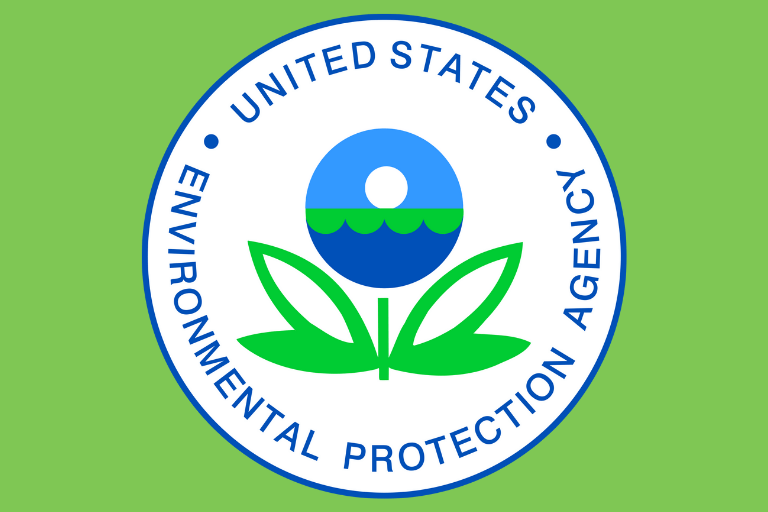What is Air Quality Compliance?
A brief dictionary definition for compliance is conforming to a rule or requirement of set of standards. A commonplace example of compliance is to operate an automobile in accordance with the local traffic rules and regulations. In the case of air emissions monitoring, compliance — or air quality compliance — means operating your facility within the constraints or limitations imposed on your facility by the respective operating permits or air quality regulations.
What Are Operating Permits?
In 1990 Congress authorized the U.S. Environmental Protection Agency to begin a nationwide program to require each stationary emission source to have a permit authorizing its operation. The EPA began rolling out these operating permits under Title V of the 1990 Clean Air Act Amendments (CAAA) in 1995.
Each emission source at a facility is listed in its operating permit and categorized as either a minor or major source depending on how many tons of a given pollutant (or collection of pollutants) are released by the respective source over a calendar year. The CAAA defines a facility as a major source if the estimated emissions for the six Criteria Air Pollutants — carbon monoxide (CO), lead (Pb), nitrogen oxides (NOx), sulfur dioxide (SO2), particulate matter (PM), and ground-level ozone (O3) — add up to and exceed 100 tons per year. A source that doesn’t reach this threshold is considered a minor source.
The monitoring and reporting requirements differ based on the categorization of an emission source; because of this, monitoring equipment required for a Title V major source is generally much more expensive. For this reason, industrial facilities may choose to burn “clean fuels” (which release very low levels of pollutants) or use pollution control equipment (such as a Selective Catalytic Reactor (SCR) or SO2 scrubber).
Part 60 and 63 Reporting 101
Facilities that must comply with 40 CFR Part 60 and 40 CFR Part 63 are required to submit reports to the EPA on a quarterly, semiannual and annual basis. At the end of the reporting period, the facility has 30 calendar days to prepare and submit the required report under the signature of the Responsible Official for the facility.
Quarterly Exception Reports
Quarterly reporting requirements for 40 CFR Part 60 and 40 CFR Part 63 are considered “Exception Reporting.” In plain terms, these reports serve as a “list of sins” — reasons a facility was unable to meet compliance requirements during the operating quarter. A quarterly report for each monitoring system is comprised of two parts:
- The occurrence of excess emissions periods (exceedance events)
- Monitoring system performance (downtime events)
If the total percentage of downtime calculated by the facility’s data acquisition system (DAS) is greater than 5% or if the total percentage of exceedances is greater than 1%, then a facility must submit a detailed report for each event, including when it began, when it ended and actions that were taken to prevent it from occurring again. Otherwise, only a summary of the events is required.
Exceedance Events
An exceedance event occurs when a monitoring system is operating properly and producing valid compliance data but the data shows the actual emissions occurred outside the normal limit or standards. A facility must include the reason the emissions exceedance event happened in its quarterly report. A typical listing of exceedance reasons is as follows:
- Startup/shutdown
- Control equipment problems
- Process problems
- Other known causes
- Unknown causes
Downtime Events
The second part of a quarterly report is the summary of a monitoring system’s performance or the listing of downtime events. A downtime event occurs when any time a unit was operating and the required monitoring systems were not working as expected. This inability to produce valid data is considered to be a deviation from compliance with the facility’s permit requirements.
Like with exceedance events, the reasons for downtime event occurrences must also be recorded in the quarterly report. Below is a typical list of downtime reasons:
- Monitoring equipment malfunction
- Mon-monitoring equipment malfunction
- Quality assurance calibration
- Other known causes
- Unknown causes
Semiannual Monitoring Reports
Semiannual monitoring reports cover the times when required monitoring for a facility did not occur during the previous 6 month period. The types of monitoring required at a facility vary but can include:
- Continuous Monitoring Systems (CEM systems, such as SO2, NOx or CO2 systems, or SCR inlet flue gas temperatures)
- Periodic monitoring (daily fugitive dust records and readings)
- Monitoring inspections of operating equipment (daily or weekly rounds of operating equipment)
- Periodic testing (schedules depends on the permit)
Annual Compliance Reports
The most challenging of the three routine reports is the annual compliance report. This report lists every compliance requirement found in a facility’s permit, defines the requirement as continuous, intermittent, or periodic, and states the compliance status (in compliance or not in compliance) for each requirement.
Part 75 Reporting 101
40 CFR Part 75 was established by the EPA in support of the Acid Rain Program (ARP). The main pollutants that Part 75 is concerned with are SO2, CO2 and NOx. Part 75 acts as an accounting system for these three pollutants (which are under a “cap and trade” program). Each year the EPA assigns allowances, or legal limits, of SO2, NOx and CO2 for each emission source, meaning facilities must partake in year-round continuous monitoring and reporting of emissions data in order to stay within their assigned allowance.
Quarterly Reports
Emissions sources under Part 75 must submit emissions reports four times a year — one report per calendar quarter. These reports allow the EPA to track emissions data throughout the year and must include the following information:
- Facility information;
- The hourly emissions data, operating data, the results of the required QA tests, and other information specified in the monitoring plan and recordkeeping sections of Part 75;
- Unit operating hours for the quarter and cumulative operating hours for the calendar year and/or ozone season;
- Tons of SO2 emitted during the quarter and cumulative SO2 mass emissions for the calendar year (ARP units and Clean Air Interstate Rule (CAIR) SO2 units, only);
- Average NOx emission rates (lb/mmBtu) for the quarter and for the year-to-date (ARP units, and certain CAIR NOx units);
- Tons of CO2 emitted during the quarter and cumulative CO2 mass emissions for the calendar year (ARP units);
- Tons of NOx emitted during the quarter and cumulative NOx mass emissions for the calendar year and/or ozone season, as applicable (for CAIR NOx units); and
- Total heat input (mmBtu) for the quarter and cumulative heat input for calendar year (or ozone season)—unless exempted from heat input reporting by regulation
Quality Assurance Activities
Part 75 reporting requirements include certain Quality Assurance (QA) activities for affected units at the following frequencies:
- Daily
- Quarterly
- Semiannual/Annual
Calibration error checks of all monitors and interference checks of flow monitors are required daily. Linearity checks of gas monitors, flow-to-load ratio tests, and leak checks of DP-type flow monitors are required quarterly. Relative accuracy test audits (RATAs) are required either semiannually or annually, depending on the results of the tests.
Part 75 Electronic Data Reports (EDRs)
Quarterly reports for Part 75 are submitted to EPA’s Clean Air Markets Division (CAMD) via electronic data report (EDR) using an EPA-provided software tool known as the Emissions Collection and Monitoring Plan System (ECMPS) Client Tool. CAMD is currently in the process of replacing the ECMPS Client tool with a new web-based tool, ECMPS (learn more in this article). The EDRs are due within 30 days after the end of each calendar quarter.
Compliance Reporting Can Be Overwhelming — We’re Here to Help
Air emissions compliance reporting can be confusing and overwhelming. With so many nuanced rules and regulations, it can be difficult to keep everything organized. Luckily ESC Spectrum’s expert Reporting Services team is here to help. Whether you need help reviewing data for exceedances and downtime as required with 40 CFR Part 60 permit or help generating an EDR for Part 75 reporting, our team is here to help. Contact us today for a quote.
Resources
ESC Spectrum’s experts created Air Emissions Regulations 101 to help educate our new team members. It’s a great starting point for anyone new to the air emissions monitoring and compliance industry. Download the guide here and watch the Air Emissions Regulations 101 webinar for an overview of EPA regulatory history, the similarities and differences between Part 60, Part 63 and Part 75 and how ESC Spectrum helps facilities with their compliance and monitoring activities.
Interested in learning more about regulations? Read our Definitive Guide to Air Emissions Regulations.


